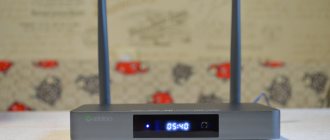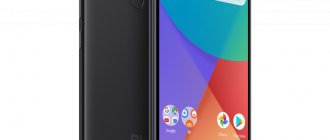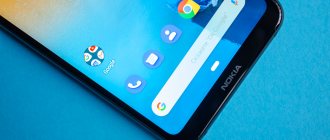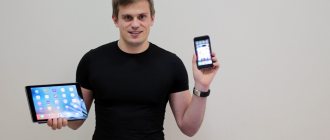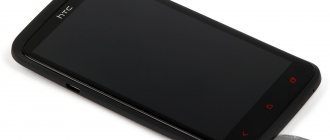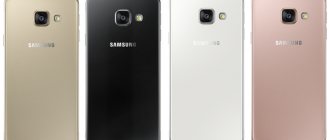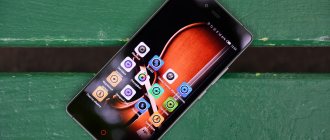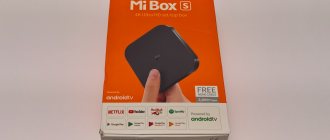The situation with Huawei, which the US accused of industrial espionage, showed that international conflicts can negatively affect even the mobile market, which seems cosmopolitan and extremely stable. And although the sanctions against Huawei have already been lifted, no one will return the nerve cells to the employees of the Chinese company - they had to endure an extremely unpleasant month, during which Huawei tried to frantically design its own OS. Could something like this happen again? Of course - especially while the United States has such an eccentric president, prone to impulsive decisions.
In view of this, the decision of the Russian authorities to develop and promote their own OS looks quite reasonable and far-sighted. And such an operating system already exists - it’s called “Aurora”. “Aurora” is not as functional as foreign Android, but it is only ours .
Where did the Aurora operating system come from?
In 2011, two technology giants Nokia and Intel, in partnership, decided to create an operating system, the distinctive feature of which was the ability to adapt to any user requirements. MeeGo appeared - an extremely interesting operating system that was used on only one smartphone model, the Nokia N9.
Russian users had few opportunities to get acquainted with MeeGo, because Nokia N9 was not sold in domestic retail. Abroad, MeeGo received a lot of positive feedback from both ordinary users and experts - but still quickly “sank into oblivion.” Nokia refused to develop this OS and decided to focus on Windows Mobile, which seemed to it a more promising project.
However, a group of enthusiasts broke away from Nokia, forming a new company, Jolla, and began developing MeeGo, on the basis of which Sailfish Mobile OS grew. The beta version of Sailfish OS 1.0 appeared in November 2013. 2 years later, Jolla released the second version of the operating system, which is still relevant today.
In 2020, another significant event occurred with Jolla: Russian entrepreneur G. Berezkin, a representative of the top 200 most successful businessmen in Russia, appeared in the company as the main shareholder. Berezkin founded the company OMP (Open Mobile Platform) in the Russian Federation. Its goal was to create Sailfish Mobile OS RUS - a Russian “folk” operating system based on the software components of the original Sailfish.
In the fall of 2020, Sailfish Mobile OS RUS was completed and added to the register of domestic software under the Ministry of Telecom and Mass Communications. In other words, a native Russian version of the Finnish “OS” Sailfish has appeared.
In 2020, Rostelecom bought a 75% stake in Sailfish from OMP, although this was more of a deal “for show” - OMP is part of the Rostelecom state corporation. Sailfish began to be financed from budget funds and received a new, more patriotic name - “Aurora”. Rostelecom President Mikhail Oseevsky spoke about the reasons for the renaming. According to him, the domestic mobile system should have a name in Russian that is easy to remember and filled with energy.
Overview of the Sailfish OS operating system
Content
- Initial setup and basic applications
- Appearance and Controls
- Android app stores and support
- Working with files, connecting to a PC, Terminal
- conclusions
Having studied the Jolla smartphone, we decided to prepare a separate material on Sailfish OS, the operating system on which this device runs. Since we reviewed the smartphone itself, we will not touch upon issues of performance, operation of communication modules, and the like. In addition, we emphasize that this article is the result of our first acquaintance with the operating system. It is possible that after using the smartphone for a long time, details will appear that were not described here. However, we will closely monitor the development of the new OS, and as soon as new information appears, we will prepare new material.
Sailfish OS is an attempt by people from Nokia to continue the developments of the MeeGo OS, which died shortly after Stephen Elop joined Nokia. To better understand the intricate pedigree of Sailfish OS, we advise you to refresh your memory of articles about Nokia N9 and Nokia N950, as well as our coverage from Mobile World Congress 2013, where Sailfish OS was first presented.
We will not retell this whole story and will only mention a few key facts necessary to understand the basic principles of the operation of the OS. So, Sailfish OS is based on a Linux kernel with a Qt and Mer add-on, and the interface and applications are made in QML and HTML5. The source code is completely open, which allows enthusiasts to modify the OS and install it on other smartphones. In particular, there have already been successful attempts to install Sailfish OS on Nokia N9 and Google Nexus 5. We also note that at MWC 2013, Jolla CEO (now head of the development team) Mark Dillon demonstrated to us the operation of Sailfish OS on a Nokia N950.
However, there is no news yet that Jolla plans to license its OS to other manufacturers, so at the moment the only official “carrier” of Sailfish OS is the Jolla smartphone. Let's get acquainted with the OS in practice.
Initial setup and basic applications
When we turn on the smartphone for the first time, we are asked to go through several steps to set up the system (selecting a language, country, registering in a store, etc.). Everything is done very nicely, the interface immediately captivates with its style and various interesting features. It’s nice that the Russian language is supported - although the smartphone is not only not sold in Russia, but is not even delivered here if you place an order on the Jolla website. Moreover, support extends both to the keyboard (Russian is present initially, it does not need to be enabled in the settings) and to the interface.
Immediately before launching the OS, we are offered to undergo a short training on managing the interface. Like MeeGo, Sailfish OS is completely gesture controlled. In addition, before launching, you can select a list of applications that will be installed. Unlike iOS and Android, we are not forced to use pre-installed maps, mail and other services - the “mandatory” package includes only Phone, Messages, Browser, Camera, Contacts, Store, Gallery, Settings, Guide and Yandex.Store.
In the screenshot on the left above this paragraph you can see the full set of pre-installed applications (the top two rows plus the first icon of the third row), and in the screenshot on the right you can see the full set of applications that we are asked to install upon first launch. It is clearly visible that there is a lot missing here - for example, a file manager, social networking clients, YouTube... Partially these problems can be solved, but we will talk about this later.
Let's briefly talk about the main applications.
All applications are very minimalistic. There are almost no settings, the interface is not always intuitive. But the appearance is pleasant. Above are screenshots of the Phone application. Below are Messages. Let's pay attention to the keyboard and switching languages. To change the layout, you need to touch and hold your finger on the spacebar button, and then, still without lifting your finger, click on the language you need in the menu that opens. On the one hand, this method of changing the layout is interesting, on the other hand, it takes longer than on iPhone and Android. If you need to insert one word in English into a Russian-language message, the procedure turns out to be too long and inconvenient.
The browser here is its own, and, to be honest, we were somewhat disappointed with it. Firstly, the interface is too unusual: the address bar is only on the second screen, where bookmarks are located. And, most importantly, there is no change in orientation from portrait to landscape. This, for example, makes watching online videos virtually pointless. Unfortunately, the lack of ability to change orientation is a problem with many Jolla applications.
The Camera application is interesting because of the layout of its settings, and the Notes application is interesting because it allows you to assign colored labels to your entries, sorting them in this way.
Clock, Calculator, Contacts, Calendar are nothing special, Media, Documents and Gallery are designed for opening various files (audio, text and photo/video, respectively). As for the Maps application, it uses Nokia Here Maps. They determine the location using GPS correctly, the maps themselves are quite detailed (in Moscow they show everything, right down to individual houses), but, alas, unlike Nokia smartphones, there is no way to use the maps locally, without the Internet.
The last Jolla app we'll cover is Mail. Its main drawback is the inability to open an attachment directly in an email client: you can only download the file and open it in Documents. And as advantages, we note the ability to select several letters and delete them all with one click (for some reason, new operating systems do not always have this option), as well as the ability to work with several mailboxes.
Appearance and Controls
For a geeky operating system, and even in its first version, Sailfish OS looks great. Well-chosen thin fonts, translucent window thumbnails, smooth appearance and disappearance effects for minimized applications...
Unlike Firefox OS, which resembles early versions of Android, Sailfish OS is truly beautiful. Let's pay attention to application icons: most of them are of different shapes. This demonstrates the Jolla philosophy, expressed by the English word Unlike (different, different from others, dissimilar).
Icons for new applications are added at the bottom; there are no horizontal desktops here, as in Android - only a vertical “sheet” with icons. And this is due to the management features.
A swipe gesture from right to left and left to right minimizes the running application without closing it. A swipe from below opens the notification window. Top—completely closes the open application. And if you put your finger on the screen and pull it down a little without lifting your finger, we will see an additional menu that will appear on top, as if above the desktop. To select one of the items in it, you need to combine this item with a translucent strip. A very interesting, although unusual solution to master!
Swiping from above when no app is running will turn off the screen and enter sleep mode. Double tapping on the switched off screen, on the contrary, turns on the smartphone. Of course, getting used to all this swiping, pulling, tapping, etc. is not so easy. And it’s not a fact that it will be really convenient in everyday life (although some solutions are clearly convenient). But, nevertheless, such experiments are necessary for the development of the mobile device industry. Perhaps some will come into use in other operating systems.
There are quite a few quite familiar solutions in Sailfish OS. For example, to delete an application, you need to click on the icon, holding your finger until a cross appears under the icon. After that, just click on the cross and the application will be deleted. In a similar way, you can “kill” unnecessary thumbnails of open applications.
Note that one of the interface features that Mark Dillon demonstrated to us at Mobile World Congress 2013 has not yet been implemented - this is application control directly in miniature. For example, controlling music playback: without opening the application to full screen, you press Play or Pause. Alas, we were never able to see this idea in action on the final device: in response to any touch, the application thumbnail expanded it to full screen. But traces of that concept remained in the appearance of the miniatures. Let's see, maybe it will be implemented in the future. However, even without this, Sailfish OS’ multitasking performance is very good.
Android app stores and support
Sailfish OS has two application stores installed: its own Jolla store and Yandex.Store. The Jolla store contains applications written specifically for Sailfish OS. At the time of this writing, there are 152 of these applications (including the Jolla applications offered during system setup). Of course, this cannot be compared with the abundance of applications for more popular and older operating systems, but considering that sales of the smartphone began quite recently, the start is quite good.
To highlight more successful applications in the Store, a system of likes is used and information about the number of downloads is displayed. In addition, there is, of course, a division into categories.
Most of the currently available applications are simple utilities and casual toys (snake, Sudoku, etc.). But there are also extremely useful things that we strongly recommend installing soon after your first acquaintance with the OS. Let's list them.
File Browser is a file manager. It’s even strange that there is nothing like this in the main set of applications. Screenshot is a tool for taking screenshots (alas, the hardware ability to take screenshots, as in Android 4.x and iOS, is not yet implemented in Sailfish OS).
Flashlight is a basic flashlight. Friends is a nice client for Facebook.
Finally, Webcat is a good (although not flawless) browser, superior to the preinstalled browser in speed (the result in SunSpider is one and a half times better!) and interface convenience, and also pleases with the presence of landscape orientation (which the preinstalled one does not have).
Of course, there are also not very successful applications in the Store. For example, a client for Dropbox called Sailbox disappointed us (it’s inconvenient to use, its functionality is modest). and Weather could not start normally. However, all the presented applications are free, so even if you install something mediocre, you won’t mind deleting it later.
Now let's see how Yandex.Store works in Sailfish OS and why it is needed here. In fact, having Yandex.Store is very valuable because you can install Android applications from it. Sailfish OS claims compatibility with Android applications, but there is no Google Play Store (Google does not license it separately from Android). Therefore, you have to be content with alternative markets, and Yandex.Store is at least not the worst of them.
Among the applications that can be installed from Yandex.Store and work quite normally with them on Jolla are VKontakte and Odnoklassniki clients, Skype (although it can only be used as a text chat due to problems with sound transmission), Viber, Angry Birds, Metro .Yandex and some others, without which it is now difficult for us to imagine our lives.
Please note that Android applications have Back and Menu buttons that are not used in Sailfish OS, but the black bar with them “eats up” part of the screen space.
And, of course, the interface of Android applications is not made in the style of Sailfish OS. We also note that players and file managers from Android are practically useless here, since the list of folders that are “visible” from them does not at all coincide with what can be seen by connecting Jolla to a computer or launching the native File Browser. Apparently, Android applications run in some kind of virtual machine, which is isolated from the main file environment. That is, working with files is difficult because of this. For example, you cannot download a movie from your computer and open it with an Android player (at least we didn’t succeed). It was not possible to play the video using MX Player installed from Yandex.Store and from a microSD card.
Working with files, connecting to a PC, Terminal
The fundamental feature of Sailfish OS is maximum openness, providing the user with maximum freedom (as befits a Linux system). Therefore, working with files here does not require any additional tricks: you can copy files from your PC to your smartphone and open them using Sailfish OS applications, you can even enable developer mode and get a fully functional Terminal at your disposal.
As for connecting to a PC, without activated developer mode, the smartphone will offer two options when connected to a computer: file transfer or charging only. In the first case, the smartphone will appear as a removable storage device, and you will be able to copy files from and to the internal memory of the smartphone. In the second case, of course, the smartphone will simply be charged from the computer.
If you have developer mode enabled, then a third option will be available, which is called Developer Mode.
It is very important that Android applications can be installed directly from an APK file: we simply copy the APK into the internal memory of the smartphone and install it. There is, of course, a chance that it won’t work properly, but this also happens on “real” Android.
As a matter of fact, the only problem with working with files that exists here is related specifically to Android, namely the inability of Android applications to reach the files in the root directory of Jolla’s internal memory. But this follows from the very logic of the operating system.
conclusions
And now we smoothly move on to the shortcomings. Of course, the system is very young, and judging it “by the Hamburg account” is perhaps not entirely correct. But it’s also impossible not to mention shortcomings and instabilities. On the first version of the firmware the situation was completely sad. Firstly, after installing one application, the Jolla store stopped working and crashed in all subsequent launches. Secondly, after starting work, a notification appeared about the availability of an OS update, but an attempt to update did not lead to anything. It seems that the OS simply did not respond to commands to start updating - so the notification about an available update continued to hang. Thirdly, there were constant freezes of various applications. For example, Yandex.Store was launched successfully only once. After the OS update was finally installed (the current version is 1.0.2.5 Maadajâvri), the problems became significantly less, but some instability and crashes were still noticed.
In addition, the pre-installed applications left mixed impressions: of course, they are all beautiful and interesting from an interface point of view, but how could they release a browser without the ability to change the orientation to landscape? Why does the Media app only play music, but videos need to be watched using the Gallery? Why can’t a video file be opened simply from the file manager - only from the Gallery? There are plenty of such small and large shortcomings, but...
And yet, despite all these problems and noted shortcomings, we consider Sailfish OS to be a very promising operating system. It has its own style, its own ideology (correct, competent and sincere), its own unique features... Finally, there is a community of developers and enthusiasts who, since the days of Maemo, have been following the fate of mobile open source projects and supporting every step in this direction. Therefore, now everything will depend on the further strategy of the Jolla team. Will they license the OS or plan to use it only on their smartphones? In the latter case, do they plan to release cheap smartphones or will they focus exclusively on the upper segment? We will probably get answers to some of these questions in the near future (for example, after Mobile World Congress 2014). And in any case, we will monitor the fate of Sailfish OS and hope that the curse of Nokia (which buried first Maemo and then MeeGo) will bypass this startup, although it was born in the bowels of the Nokia corporation, but broke with it and set off on a free voyage to your fishing boat.
PS On January 31, after the article was completed, Jolla released an operating system update 1.0.3.8 (Naamankajarvi), which fixed a number of shortcomings and added some features that were previously sorely lacking. These include: landscape mode for the browser, two-finger zoom in the Camera application, SMS support in the Android environment and other improvements.
What is good about AURORA OS?
Aurora has a number of advantages:
- Increased security. Aurora supports encryption at the operating system level and boasts strong MDM algorithms. It is for this reason that the Russian public sector was transferred to a domestic OS.
- Original interface. The Aurora interface may seem strange to a user accustomed to iOS or Android. Many operations are performed differently from Android and iOS. For example, to change the keyboard language, you have to press and hold the spacebar button. However, if the user gives Aurora a chance and uses it for at least a week, he will find that operating a smartphone with this OS is even more convenient - if only because it recognizes a lot of gestures.
- Integration with many cloud services. There are at least a dozen services to which Aurora is capable of uploading data. The user can choose which one to use - there are popular options like Google Drive, and more exotic ones (Flickr).
- Minimum default programs. By default, the menu contains only the essentials - “Contacts”, “Gallery”, “Messages”, “Browser” and so on. And, by the way, any pre-installed program can be deleted permanently - it will not return when updating the OS.
- Complete freedom when working with files. Aurora is a kind of antipode to iOS. The Russian OS is open, although some components may be closed source. You can install Android applications on the Aurora, so a smartphone with a Russian operating system will definitely not become a useless brick.
- Economical energy consumption.
Smartphones with Aurora will have longer battery life than their counterparts with foreign operating systems - at least that’s what the developers promise.
Aurora has a call recording function. This can also be attributed to the advantages of the operating system, because, for example, on iOS it is impossible to record telephone conversations using built-in tools. Apple believes that call recording violates a person's right to privacy.
What do we have with user surveillance and leaks?
iOS has disable synchronization with the cloud through Apple's own iCloud service. In particular, the following are usually stored in iCloud:
- device data backups;
- synchronized data - call log, notes, calendars, passwords in iCloud Keychain;
- passwords and history of visiting resources in the Safari browser;
- photos and application data.
All types of cloud synchronization in iOS can be disabled by simply turning off iCloud and deactivating iCloud Drive. After this, no data will be transferred to Apple servers. Despite the fact that some mechanisms do not work very intuitively (for example, to turn off call synchronization you need to disable iCloud Drive, which is actually intended for synchronizing files and photos), completely turning off cloud services completely disables synchronization.
| All types of synchronization can be disabled | All types of synchronization can be disabled |
| All types of synchronization can be disabled |
iOS has a mechanism to prevent tracking (the system can present random Wi-Fi and Bluetooth module identifiers to the outside world instead of fixed real ones).
Okay, but what about malware? In iOS, the possibility of installing malicious software is virtually eliminated. There were isolated cases (through applications built using hacked development tools), but they were quickly localized and fixed. Even then, these applications could not cause much harm: in iOS, each application is securely isolated both from the system itself and from other applications using a sandbox.
It should be noted that iOS implemented granular control over application permissions a long time ago. You can individually allow or deny each application such things as the ability to work in the background (there is no such option in “pure” Android!), access to location, notifications, and the like. Having these settings allows you to effectively limit surveillance by applications that have made such surveillance their core business (this applies to both Facebook-class applications and games like Angry Birds).
Finally, Apple regularly updates iOS even on older devices, almost instantly (compared to Android) fixing found vulnerabilities. In this case, updates arrive simultaneously to all users (again, “unlike”).
Interestingly, starting from version 9, iOS is also protected from man-in-the-middle attacks involving certificate interception and substitution. And if the Elcomsoft laboratory managed to reverse the iCloud backup protocol in the 8th version of the system, this was not possible in newer operating systems due to technical reasons. On the one hand, we receive a guarantee of the security of the transmitted data; on the other hand, we have no way to reliably verify that “extra” information will not be sent to the servers.
Option 1. Join the “Xakep.ru” community to read all materials on the site
Membership in the community within the specified period will give you access to ALL Hacker materials, increase your personal cumulative discount and allow you to accumulate a professional Xakep Score rating! More details
Option 2: Open one material
Interested in the article, but there is no way to become a member of the Xakep.ru club? Then this option is for you! Please note: this method is only suitable for articles published more than two months ago.
I am already a member of "Xakep.ru"
Does Aurora have any disadvantages?
Aurora is also not without its shortcomings. Among the main ones, users name the following:
- Unusual controls. If Android is focused more on taps, then in Aurora swipes are used - you rarely have to press the screen.
- Mediocre integration of applications with each other. On Android, for example, a picture from the gallery can be sent anywhere - be it to a messenger or to the cloud. Aurora cannot boast of such things.
- Lack of control center - the interface does not allow you to quickly launch Wi-Fi or Bluetooth.
What phones can I buy for Aurora and Sailfish?
There are still very few gadgets running Sailfish - all of them can be found on the official website of the Jolla company. There are even fewer mobile devices running the Aurora operating system.
The first smartphone with the Sailfish operating system was released back in 2013 and was named the same as the manufacturing company – Jolla. Here is a short video introducing the device:
The Jolla smartphone was officially sold in Russia (distribution was handled by the Buyon online store), but it did not become popular. Many people believe that the reason for this is the inflated price (about 20 thousand rubles) with mediocre technical characteristics.
The second phone from Jolla with Sailfish on board was released in 2020. It got a better screen and a larger battery, but performance and camera remained below average.
buy Jolla C in the Bayon online store at a fairly reasonable price - about 8 thousand rubles.
Around the same time that Jolla was preparing to release a C-smartphone, other manufacturers, albeit not the most famous ones, also became interested in the Sailfish operating system. The world's first modular smartphone, Fairphone 2, was equipped with the Finnish OS.
The Jolla company presented another gadget on Sailfish in a duet with the young Indian manufacturer Intex at the MWC 2020 exhibition. The smartphone was called Aqua Fish and the design was almost completely copied from the first Jolla.
The Aqua Fish gadget could achieve success in Russia - for its low price (about $80) it has very decent characteristics. However, it is not officially sold in the Russian Federation. You can only order a device from Intex on eBay.
In 2020, another extremely interesting device received the Sailfish operating system - Turing Phone , named after the famous British mathematician. Turing Phone is interesting because it consists of so-called liquidmorphium, a material that is stronger than titanium and steel.
However, Turing would hardly approve of his name appearing in such a dubious project. The Turing Phone company has disgraced itself on all fronts: not only did it start sending out gadgets for pre-orders after a whole year (!), but it also didn’t send what it promised. Initially, the Turing Phone was supposed to have Android; when and why the manufacturer decided to resort to Sailfish is a mystery.
In the same 2020, it announced the first device on Sailfish OS RUS - “Ermak”, with a phenomenal cost of 2 thousand dollars. "Ermak" is distinguished by its outstanding reliability - in particular, it is capable of transmitting information through closed communication channels.
All major chains “disowned” sales of “Ermak”, reasonably considering that with such a price tag a smartphone has nothing to do on the mass market.
In 2020, the OMP company nevertheless released a publicly available smartphone running on the Russian version of Sailfish - INOI R7 . This gadget has a high degree of protection of personal data, and therefore is positioned as a smartphone for the corporate sector.
INOI R7 was dubbed the first smartphone on Aurora. Despite the fact that the device was inexpensive (cost about 12 thousand rubles), its sales turned out to be negligible. Later, INOI decided to abandon the experiments and forget “Aurora” as a bad dream and a symbol of commercial failure. New INOI models run traditional Android and sell much better.
The latest gadget with Aurora for 2020 was the Aquarius NS208 tablet. It was shown at the exhibition Digital Industry of Industrial Russia (CIPR). This is an IP67 protected 8-inch tablet with an 8-core processor, NFC and a fingerprint scanner. It is reported that Aquarius NS208 fully complies with the requirements of the Ministry of Industry and Trade of the Russian Federation.
Nothing is known yet about the cost of the device. Aquarius reports that the tablet will go on mass sale only by the beginning of 2020. In addition, the manufacturer announces the continuation of cooperation with Rostelecom - other tablet models will work on Aurora.
What do Nokia and Intel have to do with it?
It's a long story. It started 13 years ago. Then, in 2005, good old Nokia was famous for its “bananas”, and the 3310 model was not yet famous for its indestructibility. In those May days of the mid-2000s, the Finnish manufacturer presented its Nokia 770 pocket computer. It was a revolutionary device: it caught the Internet via Wi-Fi! There were VoIP and Google Talk services.
The tablet supported the Jabber protocol! God, how much nostalgia there is in these words! The tablet went on sale in November 2005. The 770 ran on the first version of Maemo - 2005OS. Later Nokia N800, N810, and then N900 came out. All of them were managed by Maemo.
Maemo interface on Nokia N900
From Finland we are moving to the USA. In 2007, netbooks with Intel Atom processors were released. The company wants to promote these devices, which requires an operating system that is not very resource-intensive. Windows is not suitable - Microsoft is stupidly uninterested in Atom. Then the Moblin project appears. The name is short for Mobile Linux. As you might guess, the new operating system was designed for mobile devices. It was based on open source Linux.
Moblin interface
Eight years ago, in February 2010, Nokia and Intel announced they were joining forces. The jointly developed operating system is called MeeGo. Then it was announced that Nokia N8 would be the last smartphone to run on Symbian OS (another Nokia operating system that was installed on more devices), and N9 would be released running MeeGo.
Nokia N9 on MeeGo
It was very cool: users could choose between devices on iOS, Android, Windows Phone, MeeGo, or even buy a BlackBerry! But, unfortunately, such an idyll did not last long.
In 2011, Nokia unexpectedly shut down MeeGo. The project was no longer developed, despite the popularity of the Nokia N9. Thus, the first smartphone on this version of the OS also became the last.
Part of the team involved in the development of MeeGo left Nokia to create their own company. They named her Jolla. The team was unable to obtain control of most of the patents for the operating system, so many of its elements had to be developed anew. For example, design.
could Aurora become a third force in the future?
Market experts initially expressed cautious optimism towards the Russian Sailfish, which later became Aurora. The situation with the “blockade” of Huawei should have played into Aurora’s hands, since the Russian “OS” looked like the most obvious alternative option. It was even reported that the Chinese and Russian sides had already begun negotiations regarding possible cooperation.
However, it turned out that Huawei intends to act not as a merchant, but as a seller. They can handle their problems themselves, since they have Hongmeng, a proprietary OS with which 1 million smartphones have already been released. The Chinese company wants to offer us its hardware, because it believes (quite reasonably, by the way) that an attempt to release another Ermak will again lead to Russian production being ridiculed.
Whether Aurora will become a third force after Android and iOS is too early to judge. Rostelecom has great ambitions, but they do not yet correspond to its capabilities, since at the moment it is obvious: Aurora is not for sale, it is used only by those who are forced to do so - namely civil servants. Any attempt to “wedge” a Russian development into the mobile market invariably ends in failure, and so far there are no prerequisites that the experiment with Aurora will be more successful than with the conditional Ermak and Yandex.Telephone.
Sailfish OS devices
Devices from Jolla
On May 20, 2013, Jolla introduced a smartphone of the same name on Sailfish OS with a 4.5-inch “Estrade” screen, a dual-core processor, an 8-megapixel camera, 16 GB of internal memory, a microSD card slot, support for 4G networks and a removable battery. There are four official options for The Other Half interchangeable back panels for the smartphone: turquoise, white, red and black. Jolla Phone went on retail sale on December 11, 2013 in Finland. On November 19, 2014, Jolla announced the Jolla Tablet, the second device from Jolla and the world's first crowdsourced tablet. On the IndieGoGo platform, where Jolla began collecting funds, the amount was raised by 249% in less than 24 hours. At Mobile World Congress 2015, the Jolla Tablet received the Best Tablet of Show award from TrustedReviews. February 27, 2020 At the Mobile World Congress, which was held in Barcelona, they presented a new operating system from the Finnish developer company Jolla on the Sony Xperia X smartphone.
- INOI T8/T10
- Sony Xperia X
- Sony Xperia XA2
- Ermak WMD
Unrealized projects
Sailfish adaptation
Sailfish OS has been customized by the community for many popular devices, some of which are listed below.
Device list
- Acer Iconia Tab W500
- (laptop)
- Google Nexus One
- Google Nexus 4
- Google Nexus 7
- HP Mini
- HTC Desire HD
- HTC Desire Z
- Nokia N950 and Nokia N9 – during several presentations from Jolla
- Nokia N9 – unofficial port from the community
- OnePlus One
- OnePlus 2
- PackardBell Butterfly Touch
- Raspberry Pi 2 –
- Samsung Galaxy S3
- Samsung Galaxy Nexus
- [source not specified 469 days
] - Sony Ericsson Xperia Pro codename Iyokan
- Xiaomi Mi 2
- Xiaomi Mi 3 and Mi 4
- Varieties of ZTE Open C: ZTE Kis III (Kis 3)
- ZTE V811
- ZTE V811W (no mobile network support)
- ZTE Blade M (no mobile network support)
- Beeline Smart2
- Moche Smart A16 (MEO)
- Optus Hop Smart
- Skinny V811
